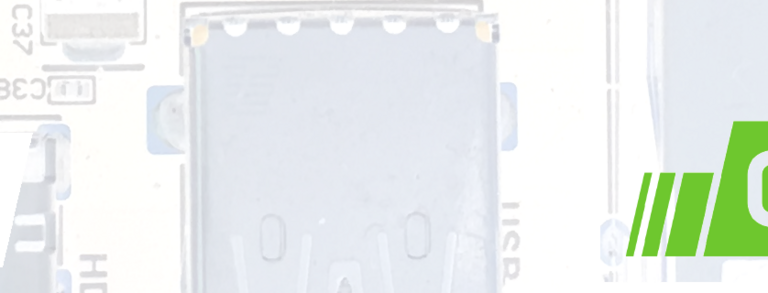Autonomous Racing - Seminar
What is the purpose of the seminar?
- All seminar topics are relevant for the success of the project group.
- To get an overview of the problems and solution approaches.
- To give all group members a common basic understanding of the problems.
- To get familiar with a specific sub-area in order to be able to lead related sub-groups later on.
Scope and objectives
- 30 minutes presentation + 8 - 10 pages elaboration.
- Familiarization with the details of the given sub-problem.
- The presentation should provide all group members with a basic understanding of the subproblem and corresponding possible solutions.
- Please include details in the paper.
What is the purpose of the written elaboration?
- For documentation for the group members.
- Can be used for the interim/final report.
Seminar Topics
1. Project management
The fundamentals of software project management should be described, including:
- different roles of project participants
- project phases
- organization of project work (plan, distribute, etc.)
- management of project resources
- continuous (re)planning with regard to project goals
- documentation and reporting
- the human component in the project
(may be based on the explanations in Projektmanagement für Ingenieure: Ein praxisnahes Lehrbuch für den systematischen Projekterfolg).
Helpful prior knowledge: Project management, understanding of business language
Literature:
- Alexander Schatten, Dietmar W. Markus Demolsky D. Markus Demolsky: Best Practice Software Engineering - Eine praxiserprobte Zusammenstellung von komponentenorientierten Konzepten, Methoden und Werkzeugen.
- Christian Aichele, Marius S.: IT-Projektmanagement Effiziente Einführung in das Management von Projekten.
- Jakoby, Walter: Projektmanagement für Ingenieure: Ein praxisnahes Lehrbuch für den systematischen Projekterfolg.
- Ticketing System
2. Recursive state estimation
The problem of state estimation shall be motivated and contextualized with respect to our PG. Furthermore, the Bayes filter as well as the Kalman filter shall be introduced (the normal KF suffices for now). Furthermore, the assumptions, advantages, disadvantages and limitations of the models shall be presented.
Helpful prior knowledge: Linear algebra, probability theory
Literature:
- Sebastian Thrun, Wolfram Burgard, and Dieter Fox. 2005. Probabilistic Robotics (Intelligent Robotics and Autonomous Agents).
3. Sensors & actuators of the remote control car
Conceptual operation of sensor technology and what is measured in which reference system: Gyroscope, accelerator, magnetometer. Furthermore, the actuator system of the remote steering car, i.e. the steering and the drive, should be presented.
Helpful previous knowledge: Mathematics
Literature:
4. Simultaneous Localization and Mapping
The SLAM problem shall be explained and motivated with reference to our PG. In addition, the Hector SLAM method will be presented as an example.
Helpful prior knowledge: Linear algebra, probability theory
Literature:
- Sebastian Thrun, Wolfram Burgard, and Dieter Fox. 2005. Probabilistic Robotics (Intelligent Robotics and Autonomous Agents).
5. Kinematics and dynamics of the remote control car
What is the kinematics of the remote steering car and what physical forces are relevant in the context of our PG.
Helpful prior knowledge: Mechanics
Literature:
- Mordechai Ben-Ari, Francesco Mondada, Elements of Robotics
- Manfred Mitschke, Henning Wallentowitz, Dynamik der Kraftfahrzeuge
6. Automatic Control & Model Predictive Control
Introduction and motivation of some basics of control engineering. What is control engineering, What is it about? What is the goal? What are the models? Based on this, the specifics of Optimal / Model Predictive Control will then be discussed and explained with reference to the problems of this PG.
Helpful prior knowledge: Signals & Systems, Control Engineering, HM1-3, Optimization.
Literature:
Translated with www.DeepL.com/Translator (free version)
- https://link.springer.com/book/10.1007%2F978-3-662-52678-1
- https://link.springer.com/chapter/10.1007/978-3-642-53944-2_7
- Otto Föllinger: Optimale Regelung und Steuerung
- E.F. Camacho and C.Bordons: Model Predictive Control
7. CUDA Programming
Helpful Previous Knowledge: Programming skills, computer architecture
Literature:
8. Neural Networks
Helpful prior knowledge: Probability, calculus, linear algebra.
Literature:
9. Image Processing
Helpful Prior Knowledge: Image processing, computer vision, discrete mathematics.
Literature:
10. Object recognition & feature generation
Helpful Prior Knowledge: Image processing, computer vision, discrete mathematics.
Literature:
- http://www.themtank.org/a-year-in-computer-vision
- Mean Average Precision (mAP)
- mAP (mean Average Precision) for Object Detection
- Feature Extraction Techniques
- Chen, Gongbo, et al. "Feature extraction and neural network-based multi-peak analysis on time-correlated LiDAR histograms." Journal of Optics 24.3 (2022): 034008.
11. Coordinate systems and and coordinate transformations
Solid systems, rotations, translations, homogeneous coordinates, Euler angles, descriptions of dynamics in moving reference systems.
Helpful prior knowledge: Linear algebra, mechanics
Literature:
12. Autoware
Autoware is an open-source software project built on Robot Operating System (ROS2) for autonomous driving.
Literature:

